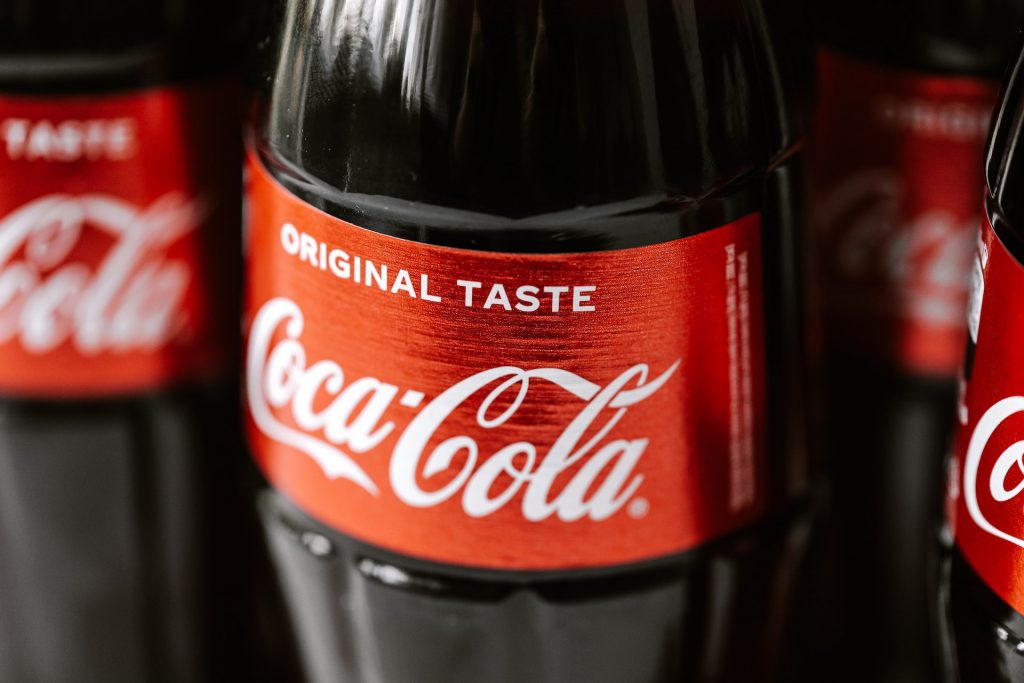In the bustling realm of commerce, where products and services clamor for attention, a prized gem exists for businesses — customer loyalty.
It’s not merely a transactional bond. It’s a psychological dance between buyer and brand that, when understood and nurtured, transforms customers from mere consumers into zealous advocates.
In exploring the psychology behind customer loyalty, we delve into the intricacies of turning buyers into brand champions, uncovering strategies, and understanding the pivotal role that Customer Relationship Management (CRM) systems play in this fascinating interaction.
Understanding the Psychology of Customer Loyalty
Loyalty is not a one-way street—it’s a reciprocal relationship rooted in psychology. Research by Harvard Business Review reveals that customers often stay loyal because of a product’s functional benefits and the emotional connection they form with a brand.
Understanding this psychological underpinning is akin to deciphering the secret language of customer devotion. When customers feel heard, understood, and valued, they become emotionally invested in a brand.
Personalized communication, such as addressing them by name or tailoring recommendations based on their preferences, can forge a connection that transcends the transaction.
A study conducted by Accenture emphasizes the importance of trust in this psychological tapestry. Trust is the cornerstone of loyalty. When customers believe in a brand’s integrity and reliability, they are more likely to make repeat purchases and recommend the brand to others.
It’s a psychological handshake that says, “I trust you, and I vouch for you.” Therefore, understanding the elements that contribute to building and maintaining trust is crucial for any business seeking to unravel the mysteries of customer loyalty.
Strategies for Building Customer Trust and Loyalty
Creating a sense of trust involves a strategic interplay of various elements, and businesses can draw insights from a Zendesk survey that found that customers view transparency as one of the most attractive qualities in a brand.
Transparency means being open about business practices, pricing, and even challenges. When customers perceive a brand as forthcoming and honest, it establishes a foundation of trust that is sturdy and enduring.
Moreover, loyalty is not just about transactions; it’s about experiences. A study from PwC discovered that 73% of customers point to a positive experience as a critical factor influencing their brand loyalties. This encompasses every touchpoint a customer has with a brand, from browsing a website to receiving after-sales support.
Crafting memorable experiences involves not just meeting but surpassing customer expectations. It’s about going beyond the transactional to create moments that resonate emotionally. These moments, whether small gestures of appreciation or personalized interactions contribute significantly to the emotional bank account that fuels customer loyalty.
Creating Memorable and Shareable Experiences
In the era of social media, where every customer can become a brand storyteller, creating experiences that are not only memorable but also shareable is paramount.
The Nielsen Global Trust in Advertising Report suggests that 92% of consumers trust recommendations from friends and family over all other forms of advertising.
This implies that when a customer becomes an advocate and shares their positive experiences, it has a ripple effect. Every share represents the brand’s ability to create moments worth discussing.
Understanding the psychology behind sharing experiences sheds light on why some stories go viral. In contrast, others fade into the digital abyss. When experiences evoke emotions—joy, surprise, or even a touch of nostalgia—they become shareable currency.
A study published in the Journal of Consumer Research suggests that emotionally charged content captures attention and inspires action.
Therefore, businesses aiming to turn customers into advocates must focus on creating experiences that trigger emotional responses, making them not just consumers of a product but contributors to a brand narrative.
Encouraging and Nurturing Brand Advocacy
Advocacy is the pinnacle of loyalty. When customers not only return for more but actively champion a brand, it signifies a level of commitment that transcends conventional marketing.
Research from the Word of Mouth Marketing Association (WOMMA) indicates that brand advocates are more likely to influence purchases.
Encouraging and nurturing brand advocacy involves recognizing and appreciating these vocal customers. Simple acts go a long way, such as acknowledging user-generated content or featuring customer stories.
Furthermore, turning customers into advocates involves inviting them into the brand narrative. A study by Texas Tech University found that brands engaging with customers on social media enjoy higher loyalty from those customers.
This engagement isn’t just about responding to comments—it involves customers in the brand’s journey.
Whether through surveys, beta testing new products, or even seeking input on business decisions, customers who feel a sense of ownership become advocates who buy and actively contribute to a brand’s success.
CRM’s Role in Fostering Customer Loyalty and Advocacy
The digital landscape has birthed an array of tools designed to decipher and navigate the intricate dance of customer loyalty. Customer Relationship Management (CRM) systems are at the forefront, offering businesses a symphony of functionalities to orchestrate this dance.
A survey by Nucleus Research found that companies, on average, receive $8.71 for every dollar spent on CRM. This staggering return on investment underscores CRM systems’ pivotal role in fostering customer loyalty and advocacy.
CRM systems act as the custodians of customer data, storing insights into preferences, behaviors, and interactions. This wealth of information becomes the compass guiding businesses to understand and anticipate customer needs.
For instance, a CRM system can flag this as a preference if a customer consistently purchases a particular product or engages with specific content. Armed with such insights, businesses can tailor their communication, ensuring that
Moreover, CRM systems are instrumental in executing targeted loyalty programs. Research from Loyalty360 shows that customers are likelier to continue business with a company that offers a loyalty program.
With their robust analytics, CRM systems enable businesses to identify and segment loyal customers, allowing for the implementation of loyalty programs that are not only targeted but also meaningful.
Whether exclusive discounts, early access to products, or personalized rewards, CRM systems provide the toolkit for businesses to create loyalty initiatives that resonate.
In brand advocacy, CRM systems showcase their prowess in tracking and appreciating vocal customers.
By flagging users who consistently share positive experiences or contribute to brand conversations, CRM systems empower businesses to acknowledge and amplify these voices.
Recognition is a potent currency in building advocacy, and CRM systems provide the means to recognize, reward, and involve these brand champions.
Strategies for Building Customer Trust and Loyalty
Building trust and fostering customer loyalty requires a thoughtful combination of transparency, consistent communication, and personalized experiences. Transparency, as mentioned earlier, is a linchpin. Businesses should be open about their practices, pricing, and potential challenges.
In addition to this, providing exceptional customer service is crucial. According to a survey by American Express, 86% of customers are willing to pay more for a better customer experience.
Therefore, investing in customer service that exceeds expectations becomes a strategic move in cultivating loyalty.
Another critical strategy is to seek and respond to customer feedback actively. Research from Podium indicates that online reviews influence 93% of customers.
By actively engaging with customer reviews, whether positive or negative, businesses demonstrate their commitment to improvement and customer satisfaction. This builds trust and shows a willingness to adapt based on customer input.
Personalization is the secret sauce in building emotional connections. A report by Epsilon found that 80% of consumers are more likely to do business with a company that offers personalized experiences.
Utilizing CRM data to tailor communication, recommend products, and anticipate needs can significantly contribute to creating a personalized and memorable experience for each customer.
Creating Memorable and Shareable Experiences
Memorable experiences are crafted through a keen understanding of customer preferences and a commitment to going beyond the ordinary.
According to a study by Salesforce, 76% of customers expect companies to understand their needs and expectations. To achieve this, businesses should focus on meeting and exceeding customer expectations at every touchpoint.
Personalization, once again, emerges as a critical strategy. Utilizing CRM data, businesses can personalize interactions, recommend products based on past purchases, and even celebrate special occasions with customers.
Amazon, for example, is renowned for its personalized recommendations, a strategy that contributes to its customer-centric reputation.
Moreover, embracing innovation can set businesses apart. Creating online and offline immersive and interactive experiences can leave a lasting impact.
For instance, augmented reality (AR) or virtual reality (VR) experiences can elevate how customers engage with products or services. Such unique encounters become shareable content, especially in the age of social media, where consumers actively seek and share experiences that stand out.
Inviting Customers into the Brand Narrative and Encouraging Brand Advocacy
Turning customers into advocates involves making them feel like valued contributors to the brand story. One potent strategy is to include customers in decision-making processes actively.
Whether through polls on social media or exclusive access to beta versions of products, making customers feel like their opinions matter fosters a sense of ownership.
Social media plays a pivotal role in this aspect. Businesses can encourage customers to share their experiences through user-generated content (UGC).
A study by Stackla found that 79% of people say UGC highly impacts their purchasing decisions. Encouraging customers to share photos, testimonials, or creative content related to the brand serves as authentic promotion and deepens their emotional connection.
Moreover, loyalty programs can be structured in a way that encourages advocacy. Incentivizing customers who refer friends or write reviews can transform satisfied buyers into proactive advocates.
Airbnb’s referral program, for instance, rewards both the referrer and the new user, creating a win-win scenario that motivates customers to promote the brand actively.
Conclusion
The strategies for building customer trust and loyalty, creating shareable experiences, and encouraging brand advocacy are intertwined.
It’s about creating a holistic approach that starts with transparency and trust, evolves through personalized and memorable experiences, and culminates in inviting customers to contribute to the brand narrative actively.
The role of CRM systems in facilitating these strategies is pivotal, serving as the backbone that enables businesses to understand, connect, and nurture relationships with their customers.
Learn more about using CRM to foster customer loyalty. Book a FREE demo below with our CRM experts to see how this tech would revolutionize your business.
Curious how digital ecosystems can help improve your business?
Check out how digital ecosystems can boost your company performance by getting started here.
Book a
Demo


